Disclosure: Meeple Mountain received a free copy of this product in exchange for an honest, unbiased review. This review is not intended to be an endorsement.
Navigating the Ruins
In Mayan Curse, players are explorers who have stumbled upon an ancient Mayan temple. The path to the inner temple is divided into several sections, each with a series of tiled rows containing different symbols. It’s a long sprint to get to the end of the temple, but that’s where the most remarkable treasure awaits! Along the way, explorers can pick up Mayan monuments and artifacts (called stelae) that reward them with knowledge, the all-important resource needed to win the game. There is a catch, however: there are three giant boulders precariously perched along the walkways, and as the explorers get further into the temple and make more of a stir, these boulders will inevitably be shaken loose and start rolling towards the entrance of the temple. You must make it out of the door before all three boulders reach the entrance, or else you’re sealed inside the temple forever and automatically lose!
The key to navigating this temple comes from the ancient stone floors. In each round, players will draw three sacred stones from a bag. These stones are decorated with symbols matching the collection of symbols on the temple floor. Players can then make up to three slides, bumping the physical location of the floor tiles around to create a pathway. Then, players spend their three sacred stones to advance as far along the path as possible. Multiple symbols adjacent to each other can be treated as contiguous, meaning if you can line up many symbols at once, you can get further into the temple on your turn.
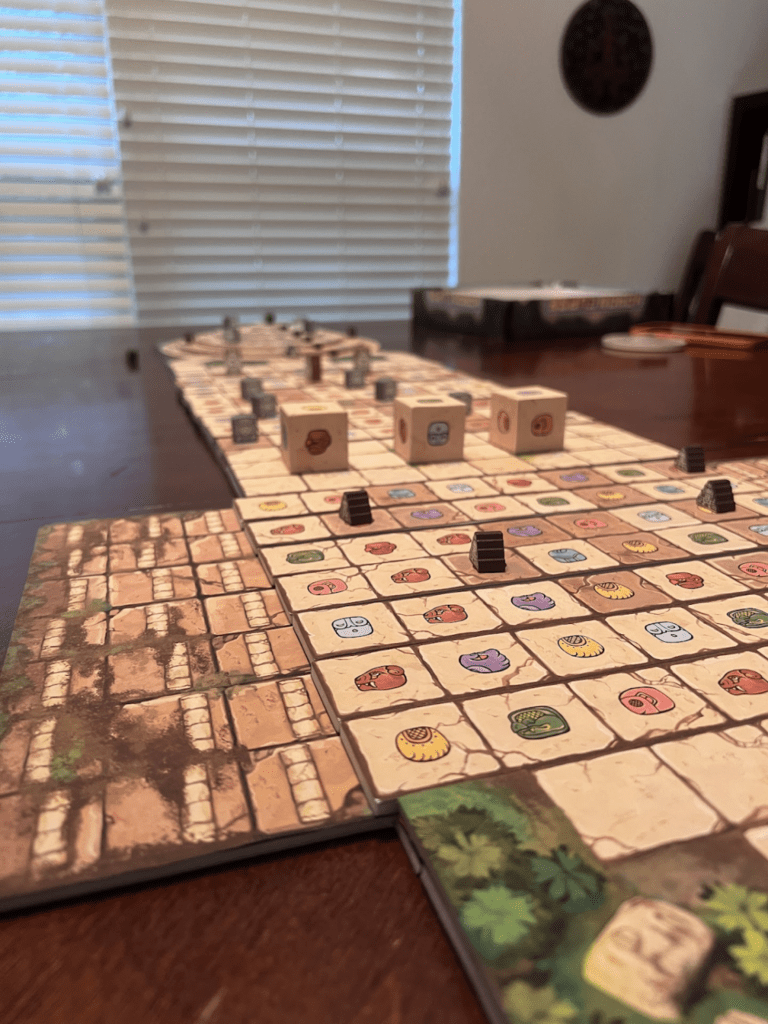
The deeper you get into the temple, the more knowledge each stelae can be worth, but the more rewarding artifacts also increase your clock for those scary boulders getting knocked loose. Once a boulder has been knocked loose, it begins careening toward the temple’s entrance, following specific movement rules as it gets closer and closer. If someone manages to reach the inner temple, the game is officially put on deadline, as all remaining boulders break loose and start their freefall towards the entrance. This puts a very real clock on the game, but the allure of making it just a couple of spaces further to reach the top of the temple to claim the ultimate knowledge is also alluring. Your mission is simple: slide the slabs, make a path, collect knowledge, but most importantly, get out alive.
Ancient Artifacts
Even in the prototype version sent for review, it’s easy to see how crucial component quality is to the final version of Mayan Curse. The stelae come in three different colors and shapes (an added, colorblind-friendly bit of accessibility) and litter the temple from the start, with their point values hidden on the bottom so only the player who collects it will know their score. The boulders are thick, chunky cubes with some heft to them, so as they barrel towards the temple entrance, the weight of their physical presence adds to the danger they present in a game sense. The different sections of the game board and multi-level temple break apart easily enough to fit back in the box, but it must also be simple enough to assemble quickly for play. Each row of the stone floor and temple must fit together snugly so they do not get bumped around but be loose enough for players to slide and rotate them easily. Moreso than most Kickstarter games, Mayan Curse will succeed or fail on the back of its final components.
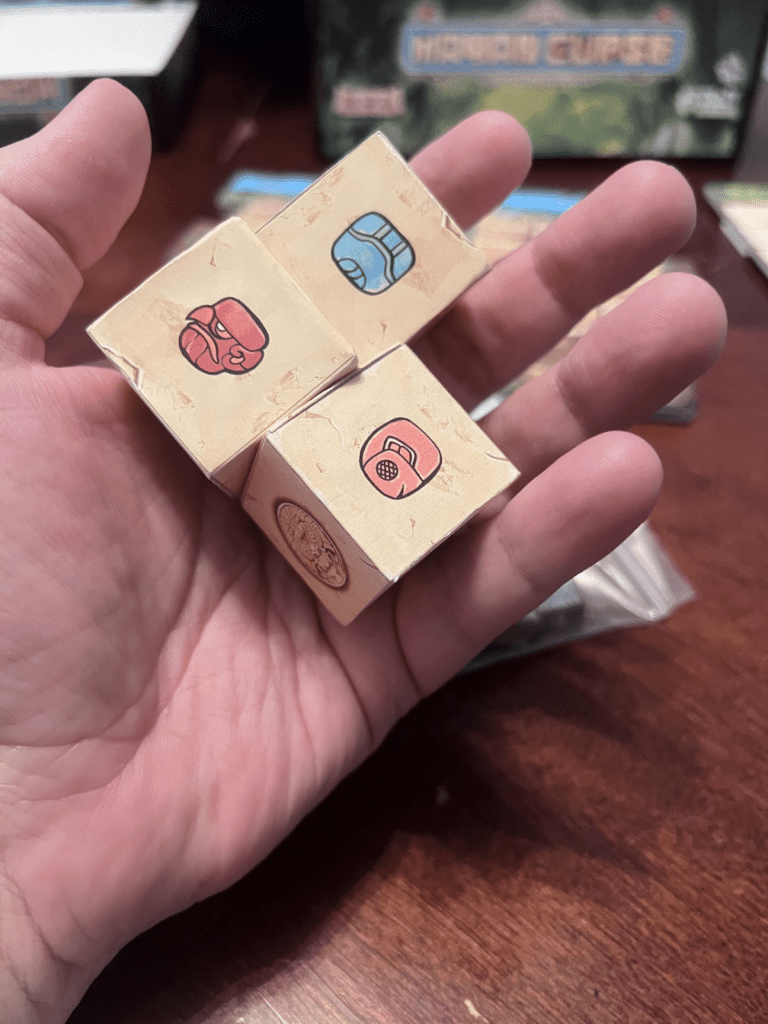
Luckily, the designers fully understand this imperative. Despite being a prototype, I was struck by how much thought and care had gone into fitting the pieces together and ensuring the wooden tokens were bright and unique. However, one particular area I’d like to see addressed before the final production is the symbols used on the gameboard. In our games, we felt many of the symbols were too similar. There are three different red symbols that all have minor differences at first glance, and not being able to quickly tell them apart led to some confusion and a lot of downtime as turns needed to be rethought. The reds, multiple blues, and purple colors are all so similar that they cause confusion. These symbols must be easily discernible, as so much of your turn is spent trying to analyze the most efficient path forward. Having to stop to carefully examine each symbol to make sure it’s the correct version of that particular color makes turns take a bit too long. Hopefully, this is a pretty simple fix that Crazy Like a Box can address before the final delivery of the product.
The Final Countdown
Let’s start by saying that if you’re looking for a profoundly strategic experience with lots of crunch and important decision-making, this will not be the game for you. There’s very little strategic decision-making because you’re at the whim of random draws from a bag and what the other players decide to do during their turns. You could draw the perfect set of stones to move you to the next section of the board, but if a player going before you shifts a couple of stones around that you needed in place, your plans can get totally torpedoed. Having to go back to the drawing board like this can lead to overlong turns. I give you this context because most of the time, I’m looking for something rich and strategic out of a board game experience. If a board game isn’t giving me that, then I want it to provide me with something unique that I’m not getting anywhere else.
On that front, Mayan Curse is successful. It is a game that I could see being a smash hit with my nieces and nephews and perhaps even a semi-educational game in helping with pattern recognition. The gameplay of stringing together similar patterns to create pathways to get across the gameboard is unique. I enjoyed the parts of my brain that activated while scanning the board to find the perfect three-in-a-row slide. (For those of you who grew up with educational computer games in the late ‘90s or early ‘00s, Mayan Curse reminds me of a specific puzzle from the Zoombinis video game). There’s also no denying that a genuine sense of dread takes over the game once those boulders start rolling. Perhaps it’s triggering my deep-rooted childhood fears instilled by the boulder chases in media like Raiders of the Lost Ark or Crash Bandicoot. The game becomes a mad dash back to the entrance as you hope and pray that those boulders take just one more turn to get back, hopefully giving you enough time to sprint there with your hard-earned rewards.
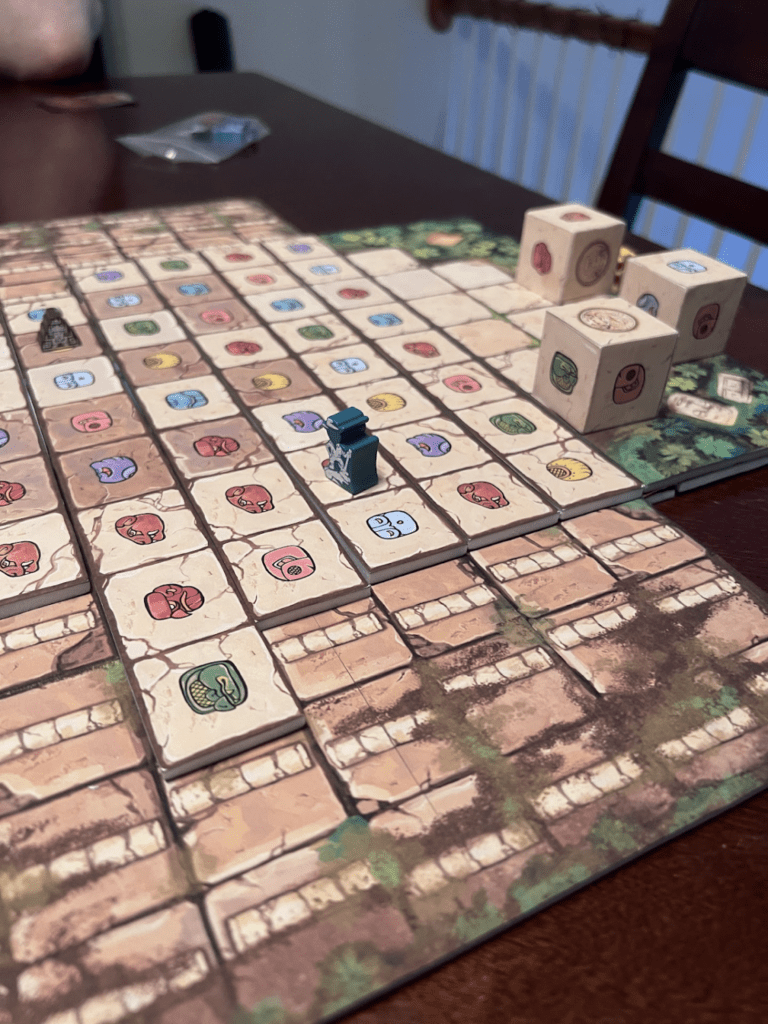
That risk versus reward tension is central to the tone of the game. Mayan Curse tends to reward conservative play over risking it for the temple run in our games. Players have few ways to interact with the game board to either slow down or speed up the game, so your pace is dictated by what the other players do. If someone is making a sprint for the temple, it’s in your best interest to hover around and scoop up some mid-range points, then try to make it back to the start before them. The game alleviates this by giving each player a one-use item that lets you break the rules or get an advantage, which can help, although it doesn’t fully solve the problem.
Mayan Curse is unique. I am excited to see what the final product looks like because if they stick the landing, this could be one of those “wow” factor games. I saw the faces of people playing around me when they realized we would physically be sliding the stone floors around, and how everyone instinctively made loud, booming sound effects each time the boulders rolled around on the board. This game may not have enough strategic depth for many board gamers, and that’s perfectly okay. But if you’re looking for a family game that introduces you to tactile gameplay mechanics that are refreshingly original, this game might be exactly what you need.


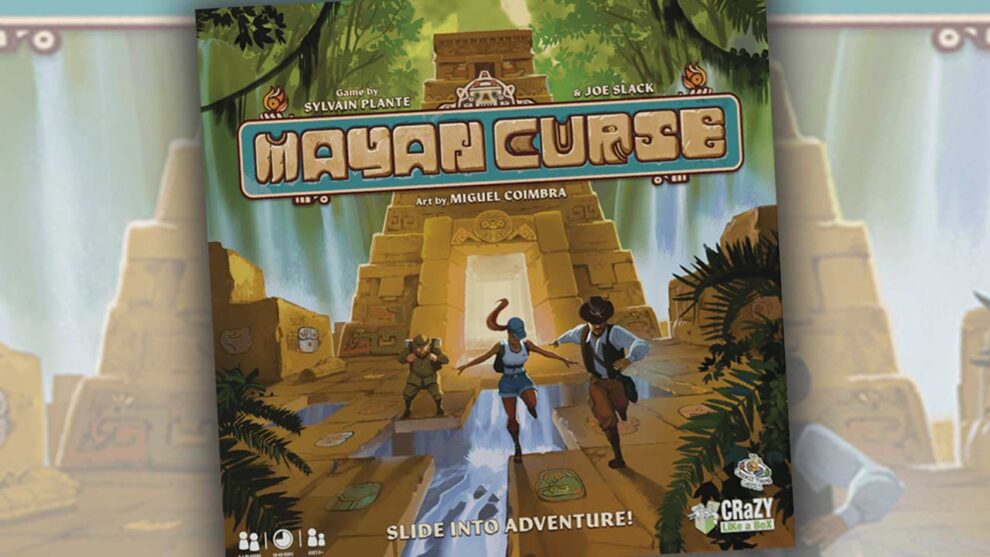

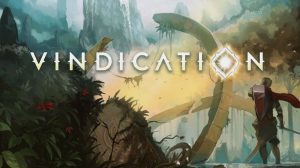
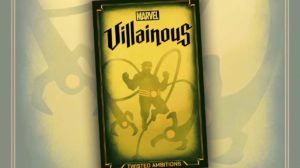





Add Comment